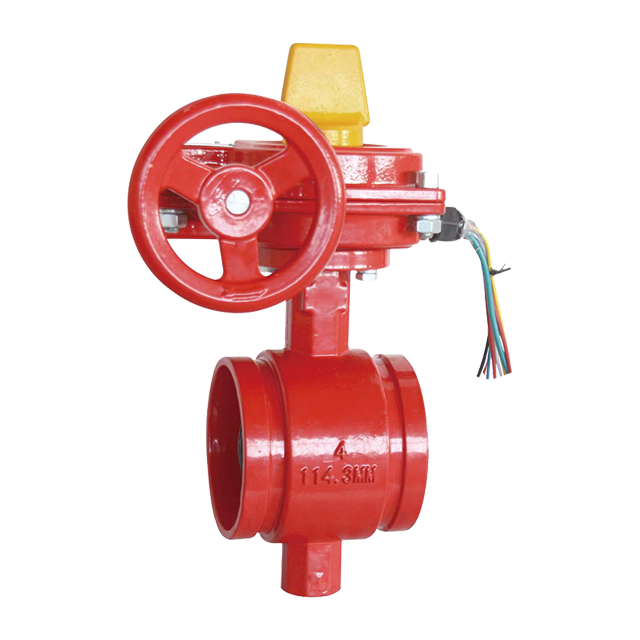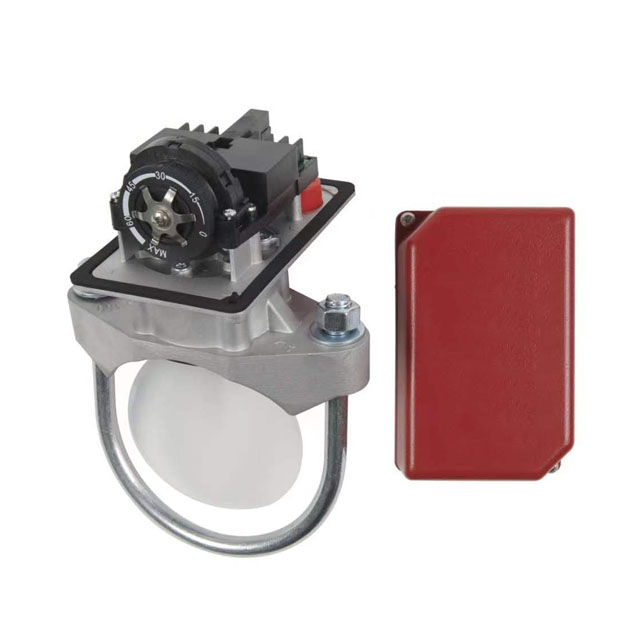A tamper switch and a flow switch are both important components in fire protection systems, but they serve different functions and are used in different contexts. Here’s a breakdown of their key differences:
1. Function
Tamper Switch:
A tamper switch is designed to monitor the position of a valve in a fire protection system, such as a sprinkler control valve. Its main function is to detect if the valve has been tampered with, meaning if the valve has been closed or partially closed, which would interfere with the proper functioning of the fire suppression system. When a valve is moved from its normal open position, the tamper switch triggers an alarm to alert building security or the fire alarm control panel that the system may have been compromised.

Grooved Butterfly Valve with Tamper Switch
Flow Switch:
A flow switch, on the other hand, monitors the flow of water in the fire sprinkler system. Its purpose is to detect the movement of water, which typically indicates that a sprinkler has been activated due to a fire. When water begins to flow through the sprinkler pipes, the flow switch detects this movement and triggers the fire alarm system, alerting building occupants and emergency services of a potential fire.

2. Location
Tamper Switch:
Tamper switches are installed on the control valves (such as gate or butterfly valves) in the fire sprinkler system. These valves control the water supply to the system, and the tamper switch ensures they remain in the open position to allow water flow in case of a fire.
Flow Switch:
Flow switches are installed on the piping network of the sprinkler system, typically in the main pipe leading from the water supply to the sprinklers. They detect the movement of water once a sprinkler head opens and water starts to flow through the system.
3. Purpose in Fire Safety
Tamper Switch:
The tamper switch ensures that the fire protection system remains fully operational by making sure the water supply valves are always open. If someone accidentally or intentionally closes a valve, the tamper switch triggers an alert so the issue can be addressed before it disables the fire suppression system.
Flow Switch:
The flow switch is directly tied to the detection of a fire event. It alerts the fire alarm system when water is flowing through the pipes, which means a sprinkler has been activated. This is a critical part of the fire alarm system’s functionality, as it signals that the sprinklers are actively fighting a fire.
4. Alarm Activation
Tamper Switch:
Tamper switches activate an alarm when the valve has been tampered with (usually closed or partially closed). This alarm is generally a supervisory signal, indicating a problem that needs to be fixed but not necessarily an active fire.
Flow Switch:
Flow switches trigger an alarm when water flow is detected in the system. This is typically a fire alarm signal, indicating that the sprinklers are responding to a fire or other significant event causing water to flow.
5. Types of Problems They Detect
Tamper Switch:
Detects mechanical interference or improper adjustments to the fire system's control valves.
Flow Switch:
Detects the presence of water flow, which is usually the result of an open sprinkler head or a pipe rupture.
Summary of Differences
|
Feature |
Tamper Switch |
Flow Switch |
| Primary Function | Detects valve tampering | Detects water flow in the sprinkler system |
| Purpose | Ensures fire system valves remain open | Triggers alarm when sprinklers are activated |
| Location | Installed on control valves | Installed in sprinkler system piping |
| Alarm Type | Supervisory alarm for potential issues | Fire alarm indicating water flow |
| Problem Detected | Valve closure or tampering | Water movement through the system |
In essence, tamper switches are focused on the readiness of the system, while flow switches are designed to detect active events like water flow caused by a fire. Both are crucial for ensuring the reliability and effectiveness of fire protection systems.
Post time: Oct-22-2024
